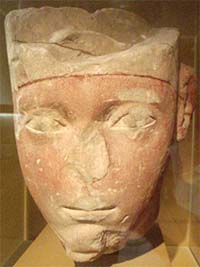Amenhotep I
Although the duration of Amenhotep I's reign is disputed, his presence in the ancient Egyptian history cannot go unnoticed. He completed many building projects, including an artisan workers' village at Deir el Medina, and was deified posthumously. His mummy was found in good condition.
Origins and Family
Born to Ahmose I and his wife, Ahmose Nefertari, Amenhotep, which means “Amun is satisfied”, was the youngest of three sons and was not expected to inherit the throne. However, both of his elder brothers died subsequent to the 17th year of Ahmose's reign, so Amenhotep assumed the throne upon his father's death. Apparently, Amenhotep was very young when he assumed the throne so his mother was regent until he became of age; he ruled for about 21 years.
After the death of Amenhotep I and his mother Ahmose Nefertari, they were both deified and worshiped, although she outlived him by a year. Being posthumously deified was rare in ancient Egypt and was approved only by the priests.
In an ancient papyrus detailing the worship of Amenhotep and his mother after their deaths, the statue of Amenhotep was given credit for settling disputes because it would turn of its own accord, forward indicated a yes answer and backward indicated a no answer.
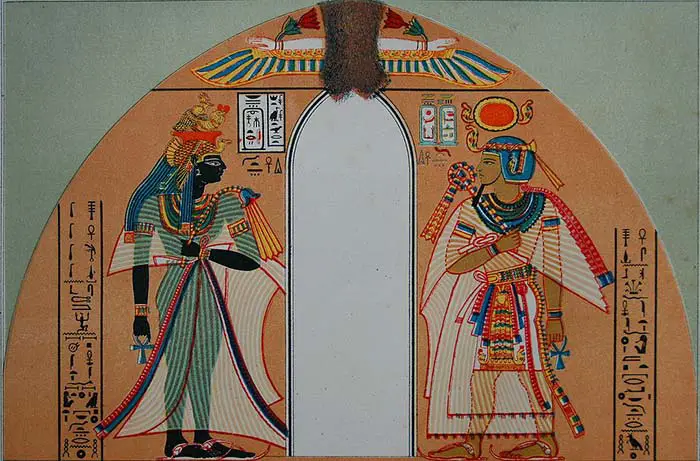
Depiction of Amenhotep I and his mother
Wives and Children
Amenhotep I had more than one wife, but the total number is unclear. Ahhotep II is thought to have been one wife, and the mother of Amenhotep's son Amenemhat, who died at an early age.
Sitkamose was another of Amenhotep's wives but little is known about her.
Ahmose-Merytamon was Amenhotep's Great Royal Wife, she was also his sister. Ancient Egyptians believed that in order to keep the blood line pure, it was necessary to marry within the family. The reverse, of course, is true and modern science has proved that the practice of in-breeding results in genetic abnormalities and deformities, but the ancient Egyptians were unaware of this. Ahmose-Merytamon apparently died when she was barely into her 30s and was afflicted with scoliosis and arthritis.
Historically, Amenhotep I is not thought to have had any male offspring that lived. However, recent DNA evidence indicates that Thutmose I was Amenhotep's son, which indicates that Thutmose's mother, Senisoneb, was a concubine, commonly called a minor wife, to Amenhotep I.
Reign
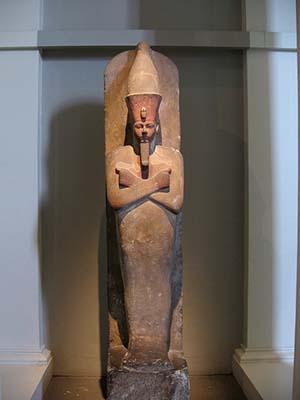
© letdown102 - Statue of Amenhotep
Historians' opinions differ on the duration of Amenhotep I's reign and the date he ascended to the throne. However, it has been determined that a heliacal rise of Sothis took place in the summer of the ninth year of his reign. If this took place in Memphis or Heliopolis, it could only have been in 1536 B.C.
If, however, it took place in the capital city, which at that time would have been Thebes, then it could only have occurred in 1517 B.C., which lends credence to the fact that Amenhotep ascended to the throne in 1517 B.C., and reigned for approximately 21 years. The length of his rule is attested to by a man named Amenemhet, who was a temple magician. He categorically states that he served for 21 years as court magician, which confirms that Amenhotep ascended in 1517 B.C.
Amenhotep's 21 year reign was primarily peaceful. A few skirmishes are documented, but for the most part, Amenhotep's peaceful reign enabled him to restore temples and erect elaborately designed monuments. His most famous structures are located at the temple of Karnak, where he erected a massive limestone gateway that may have been the main Southern entrance to the temple.
Another of Amenhotep's structures was a bark shrine that he built to honor the god Amun and a chapel at Abydos that was dedicated in his father's honor. Although Amenhotep both began and continued many building projects during his reign, most of the structures were subsequently destroyed by enemies or other kings. All of his buildings were located in Upper Egypt, none are known to exist or have existed in Lower Egypt.
Even though his reign was relatively peaceful, Amenhotep expanded Egypt's borders into what is now the Sudan. Biographical information from soldiers confirm Amenhotep's forays into Nubia and Libya and the establishment of bases in these areas. He also reopened the various mines at the Sinai Peninsula.
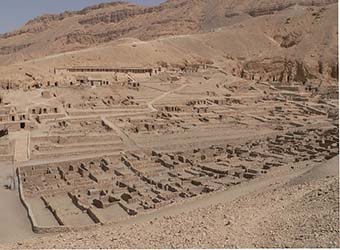
© Troels Myrup - Deir el Medina
Cultural Developments
Amenhotep contributed substantially to the cultural development of his time. More than likely, Amenhotep founded the artisan's village located at Deir-el-Medina, since much of the artwork in the Theban Necropolis tombs came from there. At Dayr al-Madinah, he also founded a village for the cemetery workers; this also became a site for the people to worship both Amenhotep and his mother after their deaths.
Both Amenhotep and his mother were patron saints of the arts and encouraged the development of the arts, although much of it was copied after the Middle Kingdom style. Their methods of copying Middle Kingdom artwork was so precise that even today, historians have difficulty differentiating between the two.
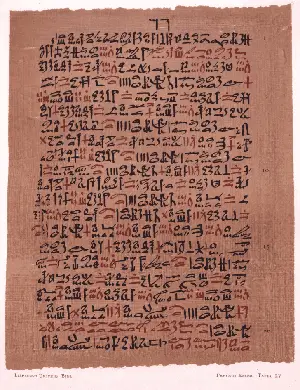
The Ebers Papyrus
Another of Amenhotep's legacies is the invention of the first water clock, made possible by Amenemheb, who was the court astronomer. Egyptian timekeeping determined an hour as 1/12th of the night, so when nights were shorter, hours were shorter; water clocks were easily adjusted to allow for this discrepancy.
Several books remain from Amenhotep's reign, including the Ebers Papyrus, which provides insight into the medicine of the time as well as the heliacal rise of Sothis that marks the date of Amenhotep's ascension to the throne. Included in the Papyrus Ebers is astronomical information with a festival calendar that indicates Amenhotep may have been contemplating reworking earlier calendars.
Death and Legacy
Although Amenhotep's burial site is as yet unknown, his mummy was found in the Deir-el-Bahri Cache, along with several other nobles and kings of the New Kingdom. The most likely site for his tomb is considered to be at Dra' Abu el-Naga, Tomb ANB because artifacts bearing his name and those of his family members are also located there.
His mummy is in good condition, remaining in its original wrapping and being adorned with a garland of flowers, the requisite funerary mask, a wasp, and a shroud. In 1967, X-rays of the mummy revealed a small amulet and a bead girdle in the wrappings and a post-mortem fracture of the lower right arm.
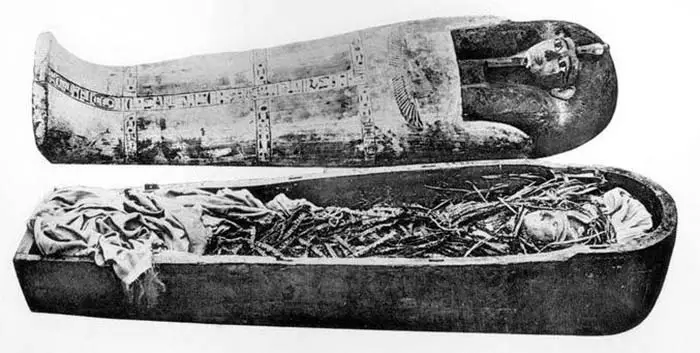
Mummy of Amenhotep I
Speculation is that this was a result of rewrapping that was done in the 21st Dynasty. Amenhotep's arms were crossed over his chest, which was standard practice for the time.
Amenhotep I began the practice of separating his tomb from his mortuary temple in order to deter looters; Queen Hatshepsut continued this practice by demolishing Amenhotep's mortuary temple and using the site to construct her own.
Amenhotep's posthumous deification awarded him three manifestations:
- Amenhotep of the Town
- Amenhotep Beloved of Amun
- Amenhotep of the Forecourt
Several annual feasts were held in his honor and commemorated his ascension to the throne, his status as Amenhotep of the Town, and his death. Rather than worship the statue of Amenhotep, the people worshiped a statue of Amenhotep worshiping the god Amun, which was unusual for the time.
Facts about Amenhotep I
- Amenhotep I reigned for approximately 21 years. It is likely he is the father of Thutmose I.
- During his mostly peaceful reign, he built elaborate monuments, among which a limestone gateway at Karkak, a chapel dedicated to Amun at Abydos, and his mortuary temple (which was later brought down by Hatshepsut).
- Both Amenhotep I and his mother were posthumously deified and seen as patrons of the arts.
- Archaeologists found his mummy in the cache at Deir-el-Medina, although the original burial place is probably at Dra' Abu el-Naga, Tomb ANB, where artifacts with his name were discovered.

